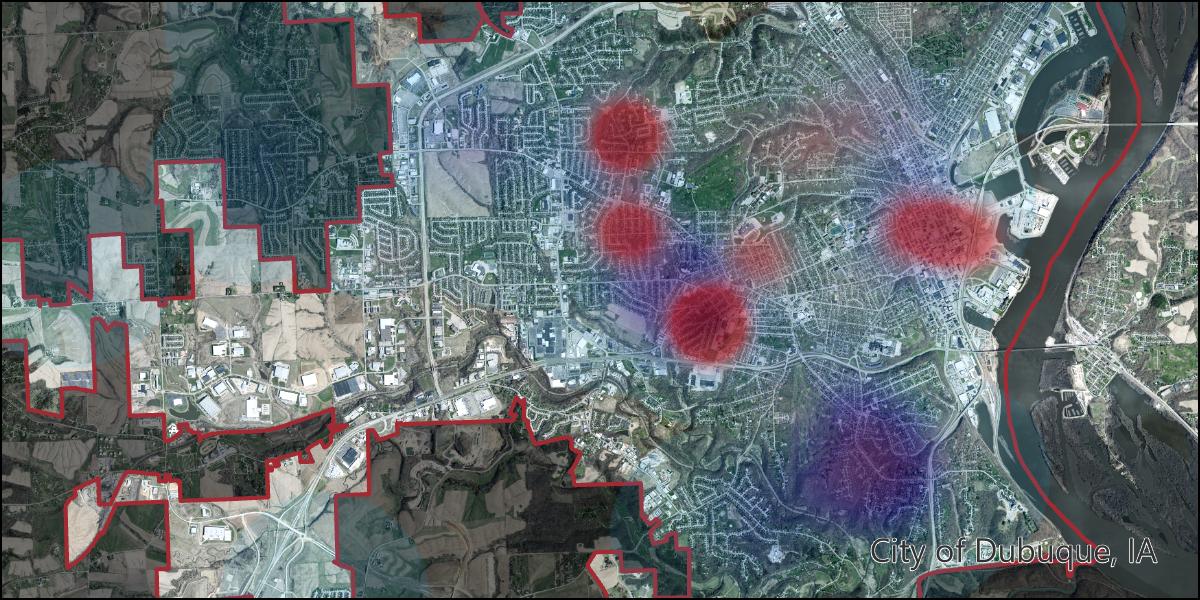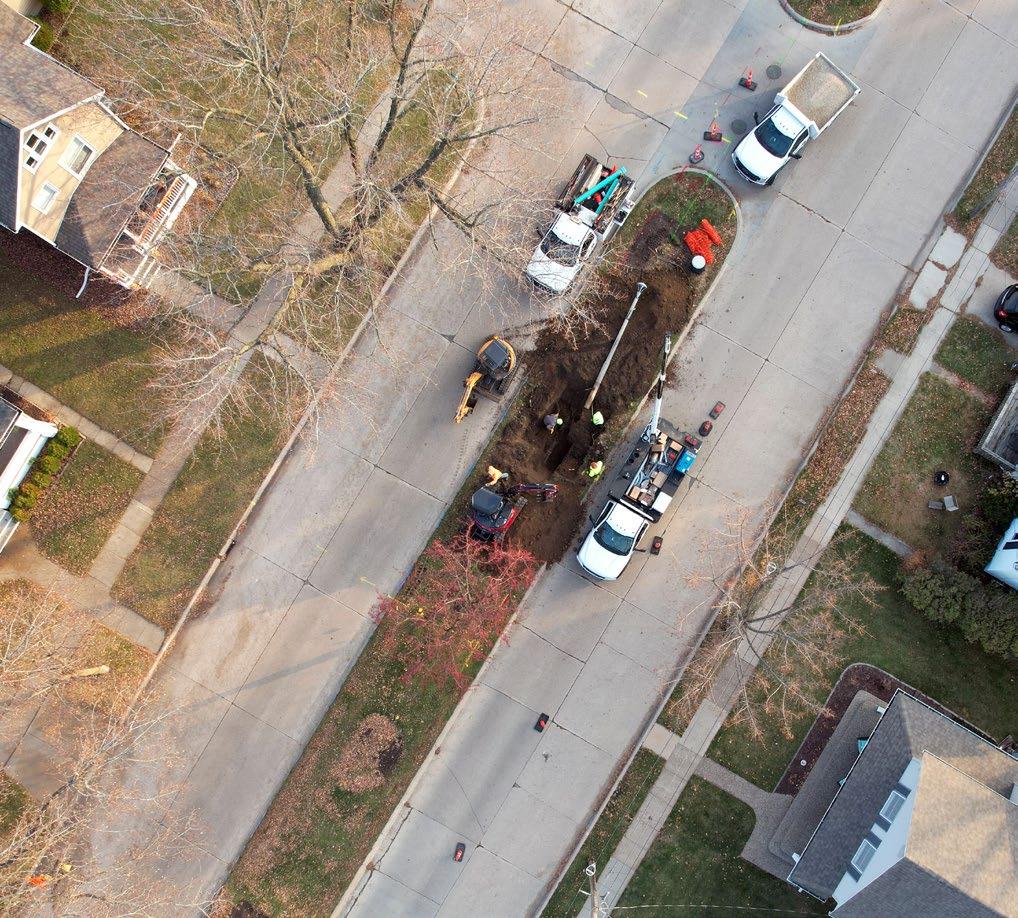
3 minute read
Broadband Expansion and More
Using GIS to make data-driven decisions
What do fire hydrants, rental licenses, and stop signs all have in common? While that question sounds like the beginning of a bad joke, it’s not, and the answer is simpler than you would think: all three have a location. In fact, all of the infrastructure the City maintains is located somewhere, and having a location allows any asset to be mapped in geographic information system (GIS) software.
Advertisement
The City utilizes GIS technology for all data with a geographic component, from manholes to potholes. “Our goal is to provide a solid asset management system that can be used to manage day-to-day work, but also provide data for solutions to our community’s needs,” said City of Dubuque GIS Coordinator/Analyst Nikki Rosemeyer.
As the GIS coordinator/analyst, Rosemeyer leads and assists over 300 GIS users within the City organization in making data-driven decisions using GIS intelligence. GIS can be used to inform something as simple as locating a streetlight to perform yearly maintenance, to a more complex project like analyzing what neighborhoods in the city see the most improper setouts of curbside trash and recycling collection to advise outreach campaigns. Determining Broadband Needs
Recently, GIS was used to inform stages of the Broadband Expansion Initiative, which used location intelligence to better understand the community’s internet use and coverage, identify gaps in service, and prioritize where to invest in broadband infrastructure.
In 2021, the City surveyed residents regarding their internet and cellphone provider, pricing, and speed to see where in the city lacked adequate coverage. Additional questions were asked to better understand who was impacted by limited or nonexistent broadband availability, and where in Dubuque they lived.
Survey results were analyzed and mapped using GIS, and clearly showed certain areas of the city where people are disproportionately disadvantaged when it comes to affordable and reliable internet access. For example, 30% of survey respondents said they requested faster internet speed from
Survey respondents who requested an improvement in their home internet service and whether or not the improvement was deemed possible
Successful requests for improvement Unsuccessful requests for improvement
their provider and were told it wasn’t available. Using this information, the City determined priority areas and developed a long-term plan to bring broadband connectivity to areas of Dubuque that needed it most.
Creating a Plan
Having identified areas of greatest demand for expanding broadband infrastructure, the City approached private sector providers willing to invest resources in the community. The GIS analysis enabled the City to present a project that would result in service provider profit via increased customers and coverage, and would address community concerns about speed, access, cost, and equity. This publicprivate collaboration reduced the cost and time required for broadband expansion. The areas of greatest need for expanding broadband infrastructure also overlapped with census block groups where the City already targets improvements through Community Development Block Grants, allowing Dubuque to utilize and apply for additional federal grant funding.
“When we went to city council to execute a plan, we had the data, analysis, and maps clearly showing opportunities and areas for real impact and success,” said City of Dubuque Information Services Manager Chris Kohlmann. She oversaw early stages of the Broadband Expansion Initiative fostering broadband provider partnerships resulting in over $2.6 million of value to the city and a leverageable investment of over $19 million in infrastructure. She also knew the potential this new targeted investment had using the private-public partnership as an efficient way of sharing infrastructure and services that allows for a reduction in broadband deployment and provisioning costs.

Crews installed conduit for fiber optic cable as part of the City’s infrastructure investment to provide greater access to broadband throughout Dubuque.
It’s stories like this that show infrastructure as so much more than pipes and roads. Having infrastructure like fiber optic conduit and cable to provide Dubuque with high-speed internet at an affordable rate means that residents are now connected to jobs, education, telehealth and everything you can now do online. Infrastructure makes an impact, and the City of Dubuque is making sure every infrastructure asset is being tracked in GIS and leveraged for the betterment of our city.










